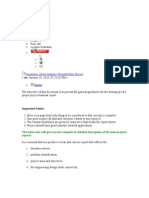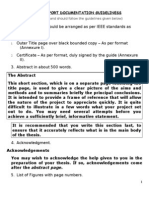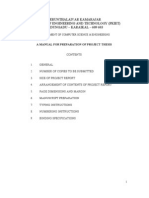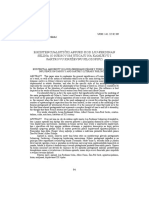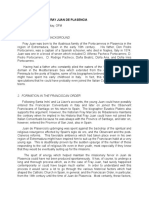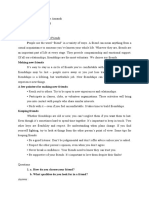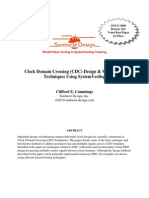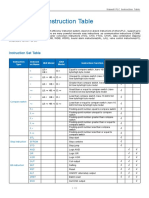[For 2020-24 Batch]
GUIDELINES FOR PREPARATION OF
B.TECH. PROJECT SYNOPSIS
CSE
The detailed guidelines and formats for preparation of B. Tech. Project Synopsis report is
explained in the succeeding paragraphs:-
[I] GENERAL TYPING INSTRUCTIONS
(a) Standard A4 size (297mm x 210mm) paper should be used for preparing the report.
(b) Tables and figures should conform to the margin specifications (i.e. inline with the text).
Large size figures should be photographically or otherwise reduced to the appropriate size
before insertion.
(c) General Page Layout:-
(i) The margins of every page of the report should be as follows
Top : - 1” Bottom : - 1” Right: - 1” Left: - 1.5”
(ii) To ensure that the margins are correct:
Header: - 0.5” Footer: - 0.5”
All the data/text should fit within the above specified margin
(iii) requirements (including tables, figures, graphs etc.). Full paper points of
diagrams/image should confirm to the sure margins as specified above.
(iv) Right Header Project Title (In Italicized Font)
Name of Department, College.
(v) Left Footer
[Eg.: CSE DEPARTMENT, SMS, Lucknow]
(vi) Right Footer Page Number
(d) Other specifications will be as under:
(i) Font Type - Times New Roman
(ii) Chapter Center/Right Aligned, Bold and Underlined with
-
Headings Font Size 18.
(ii) Sub Heading - Bold & Font Size 14 (may be underlined if required)
(iv) Contents - Font Size 12
(v) Paragraphs - Justified
(vi) Line Spacing - 1.5
(vii) Single line spacing should be used for typing Long Tables; References.
(viii) Foot notes/contents within header/footer can be 9 or 10 point size (i.e.
should be less than normal text.
(ix) The Title of the Project should be in „Title case‟ or „ALL CAPS‟.
[II] TABLES & FIGURES
The term „Table‟, is meant for tabulated numerical data in the body of the report. All other non-
verbal material used in the body of the report as charts, graphs, maps, photographs and diagrams
may be designated as „Figures‟.
Page 1 of 20
�(a) A „Table‟ or a „Figure‟ including their caption should be accommodated within the
prescribed margin limits. It should appear on the page following the text where their first
reference has been made.
(b) Tables and Figures one half or less in length may appear on the same page along with the
text. However, they should be separated from the text both above and below by appropriate
spacing.
(c) Two or more small tables or figures may be grouped if necessary in a single page.
(d) Unless colors are significant; Figures, Images are Tables should be printed on gray scale.
(e) The Figures caption is always appended at the bottom of the figure, while the Table caption
is included at the top of the table.
(f) Tables and figures appearing anywhere in the project should bear appropriate numbers.
[III] NUMBERING INSTRUCTIONS
(a) Minimum font size is 10-point for page nos. and should be kept consistent throughout the
text.
(b) Equations appearing in the report should be numbered serially, however this should be
followed consistently throughout the text. All the equations should be center aligned.
(c) Equations should be referred within the text, throughout their respective equation numbers.
[IV] MANUSCRIPT PREPARATION
The sequence in which the Project Synopsis should be arranged is as follows:
(a) Cover Page (Refer Appendix „A‟)
(b) Introduction [This may include the general introduction of the project, general background,
previous work done in this area (brief literature survey).]
(c) Problem Definition
(d) This should consist of Project objective and Proposed Methodology.
(e) Project Objective (This should highlight the aims and objectives clearly indicating the scope of
the project, the ideas and the approach of proposed work.)
(f) Proposed Methodology (This discusses the proposed path of implementation of the project.
A complete block diagram should be given followed by description of each block.)
(g) Theory (This head should describe the related technology involved in the project,
mathematical concepts used, description of the algorithms, salient features of the proposed
design etc.). Please ensure that „Theory‟ should not be used as Chapter Heading. Heading
should be given as appropriate with respect to topic/content described.
(h) Software/Hardware Requirements and Specifications (This may include the basic
requirements and specifications for the hardware/software setup, depending upon whether the
project is a Hardware model/Software model or both).
(i) Module description (This should describe the proposed input, output and functioning of
each module in detail.)
Page 2 of 20
�(j) Data Flow Diagram (DFD)/Class Diagram & Use Case Diagram (Optional depending on
the type of the project)
DFD: 0-level (Taking project as a whole)
(This describes the flow of data through information system.)
Class Diagram: High level class diagram (should only include domain level classes)
(This describes the static structure of a system by showing the system‟s classes, their
attributes, operations and relationships among classes.)
Use Case Diagram: (The main purpose of use case diagram is to show what system
functions are performed for which actor.)
(k) Applications/Advantages/ Limitations along with Proposed Cost (This should cover the
various merits and demerits of the project. The advantages should be elaborated as Applications,
while limitations serve to be a source for future improvements).
(l) References (Refer Appendix-B).
Note:- 1. Material downloaded and copied from internet or any Research Paper should be edited properly in the
sense to remove comic fonts, shadings, hyperlinks etc.
2. Any other point not covered in (1)–(9) can be incorporated at the department level.
Page 3 of 7
� Appendix - 'A'
PROJECT SYNOPSIS
On
PROJECT TITLE PROJECT TITLE
Submitted for Partial Fulfillment of Award of
BACHELOR OF TECHNOLOGY
In
Computer Science & Engineering (2024)
By
[Name(s) of the Student]
Under the Guidance
Of
[Name of the Project Guide]
SCHOOL OF MANAGEMENT SCIENCES,
LUCKNOW
Affiliated to
Dr. APJ ABDUL KALAM TECHNICAL UNIVERSITY,
LUCKNOW
Page 4 of 7
� Appendix - 'B'
REFERENCES
[1] S. Ariponnammal and S. Natrajan, “Transport Phenomena of Semiconductors,” Journal
of Medical Physics, Vol. 42, No.5, pp. 421-425, April 2005.
[2] P. Banerjee, M. Haldar, D. Zaertsky, and R. Anderson, “Overview of 4 Compiler for
Synthesizing Matlab Programs onto FPGAs,” IEEE Transactions on Very Large Scale
Integration (VLSI) System, Vol. 12, No. 3, pp. 312-324, March 2004.
[3] J. Jores (2006), “Contact Mechanics,” Cambridge University Press, U.K., Chapter 6,
pp. 144-164.
[4] C. Rovers Eds., “Recent Advances in DSP Techniques,” 2nd ed., Taylors Frances Group,
USA, 2006.
[5] R. Smith (2008), “Contact of Cylindrical Surfaces involved in a Non-Steady Motion,”.
Available Online at: http://www.casphy.cenm.edu/homepage.html
[6] H. D. Cheng, “Image Features Extraction using Volterra Filters,” Proc. of 5th IEEE
International Conference on Machine Vision and Artificial Intelligence, Beijing, China, pp. 42-
57, October, 2009.
[7] A. K. Barnard, “A Study of Stereo Matching Algorithms for Mobile Robots,” A Thesis
Report for University of Bath, U.K., 2005.
[8] J. P. Williamson, “Non-Linear Resonant Granit Devices,” US Patent 3 624 12, July 16,
1990.
[9] Motorola Semiconductor Data Manual, Motorola Semiconductor Products Inc., Phoenix,
AZ, 1987.
Page 5 of 7


















